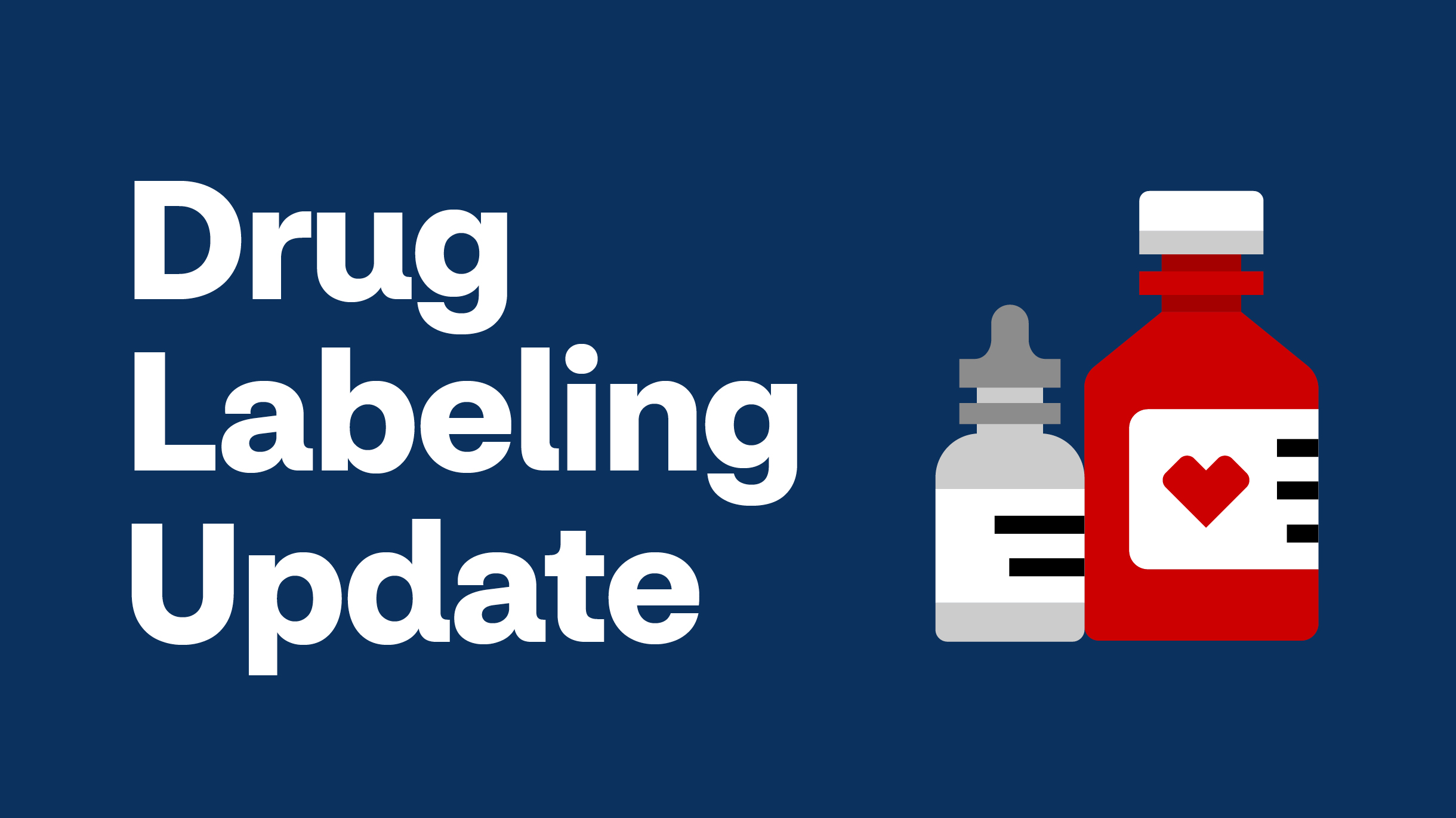
To help ensure patient safety, a Coram clinician may notify a patient and/or their physician of these labeling updates when appropriate.
TYENNE (TOCILIZUMAB-AAZG) The Warnings and Precautions section of the Approved Drug Label (ADL) was updated regarding Gastrointestinal Perforations and Hypersensitivity Reactions, Including Anaphylaxis. Guidance was added that serious cutaneous reactions, including Drug Reaction with Eosinophilia and Systemic Symptoms (DRESS), have been reported in patients with autoinflammatory conditions treated with tocilizumab products. These details were also included throughout the Patient Counseling Information, Medication Guide, and Postmarketing Experience sections. Serious Allergic Reaction details updated include itching, skin rash, hives, redness or swelling outside of the injection site area, dizziness or fainting, fast heartbeat or pounding in the chest (tachycardia), and sweating. The Use in Specific Populations, Pregnancy section was also updated to include Risk Summary and Disease-associated Maternal Risk. The available data and published literature are insufficient to draw conclusions about a drug-associated risk of major birth defects, miscarriage, or other adverse maternal or fetal outcomes. The risk of adverse pregnancy outcomes in women with rheumatoid arthritis is associated with increased disease activity. Adverse pregnancy outcomes include preterm delivery (before 37 weeks of gestation), low birth weight (less than 2500 g) infants, and small for gestational age at birth.
LUNSUMIO (MOSUNETUZUMAB-AXGB) The Warnings and Precautions section of the (ADL) was updated. The updated section of Neurologic Toxicity, including Immune Effector Cell-Associated Neurotoxicity Syndrome (ICANS) details life-threatening neurologic toxicity and associated clinical trial data. A new subsection was added detailing Hemophagocytic Lymphohistiocytosis stating that Lunsumio can cause fatal or serious hemophagocytic lymphohistiocytosis (HLH). HLH is a potentially life- threatening, hyperinflammatory syndrome that is independent of CRS. Common manifestations include fever, elevated ferritin, hemophagocytosis, cytopenias, coagulopathy, hepatitis, and splenomegaly. Additional clinical trial data was included. These details were further included throughout the Medication Guide and Patient Counseling Information.
SUNLENCA (LENACAPAVIR SODIUM) The Warnings and Precautions section of the ADL as updated to include Injection Site Reactions stating that improper administration (intradermal injection) has been associated with serious injection site reactions, including necrosis and ulcer. Ensure Sunlenca is only administered subcutaneously in the abdomen. The Postmarketing Experience section was updated to include general disorders and administration site conditions, injection site necrosis. Drug Interactions were updated to detail interactions with systemically administered dexamethasone. The Patient Counseling Information was updated regarding Missed Dose. This information states oral Sunlenca therapy may be used for up to 6 months to replace missed injections. Oral dosing should be used on an interim basis only and that the maintenance injection dosage should be resumed at the earliest possible opportunity. Dosing consists of 1 tablet by mouth 1 time every 7 days, until injections resume.
IFEX (IFOSFAMIDE) The Warnings and Precautions section of the ADL was updated extensively to detail Myelosuppression, Encephalopathy, Nephrotoxicity and Urotoxicity, Cardiotoxicity, Pulmonary Toxicity, Secondary Malignancies, Embryo-Fetal Toxicity, and Infertility. Further supportive details were included throughout the Patient Counseling Information, Adverse Reactions, Clinical Trials Experience, and Postmarketing Experience. The Use in Specific Populations sections were updated including Pediatric Use, Geriatric Use, Use in Patients with Renal Impairment, Use in Patients with Hepatic Impairment, Pregnancy, Lactation, and Females and Males of Reproductive Potential.
MERREM (MEROPENEM) The Warnings and Precautions section of the ADL was updated regarding Rhabdomyolysis to state that Rhabdomyolysis has been reported with the use of meropenem. If signs or symptoms of rhabdomyolysis such as muscle pain, tenderness or weakness, dark urine or elevated creatine phosphokinase are observed, discontinue Merrem IV and initiate appropriate therapy. These details were also included within the Adverse Reactions section.
ZOSYN (PIPERACILLIN SODIUM; TAZOBACTAM SODIUM) The Warnings and Precautions section of the ADL was updated regarding Rhabdomyolysis to state that Rhabdomyolysis has been reported with the use of piperacillin and tazobactam. If signs or symptoms of rhabdomyolysis such as muscle pain, tenderness or weakness, dark urine or elevated creatine phosphokinase are observed, discontinue piperacillin/tazobactam and initiate appropriate therapy. These details were also included within the Adverse Reactions section.
CEFAZOLIN SODIUM The Warnings and Precautions section of the ADL was updated to detail the Risk of Development of Drug-resistant Bacteria, Prothrombin Activity, and Drug/Laboratory Test Interactions. The Adverse Reactions section was updated to detail clinically significant adverse reactions such as Hypersensitivity Reactions, fall in Prothrombin Activity, and Clostridioides difficile colitis from clinical trials experience. The Use in Specific Populations section was updated to Include Risk Summary in Pregnancy. The Pediatric Use section clarifies indication for pediatric patients 1 month of age and older for whom appropriate dosing / formulation can be achieved and that safety and effectiveness of Cefazolin for injection in premature infants and neonates have not been established. A minor update was made to the Geriatric Use subsection to specify the administration route of injection.
Reference: Drug Safety-related Labeling Changes (SrLC) (fda.gov)
This article contains references to brand-name prescription drugs that are trademarks or registered trademarks of pharmaceutical manufacturers not affiliated with Coram.
